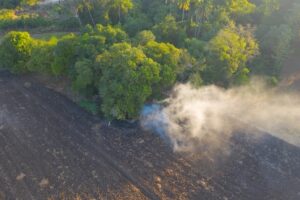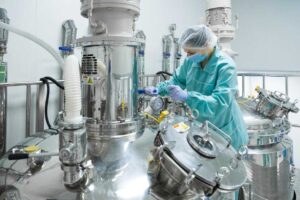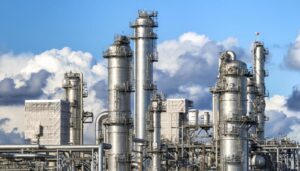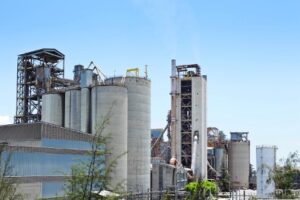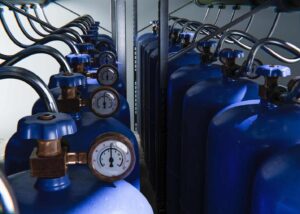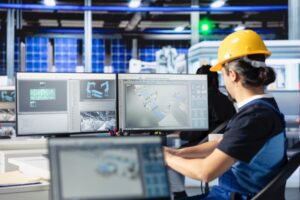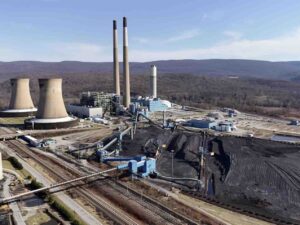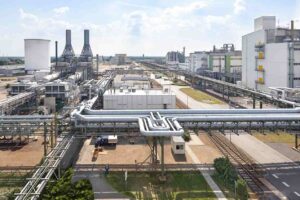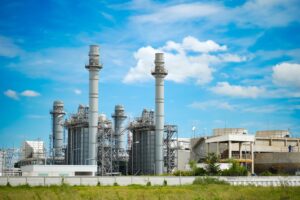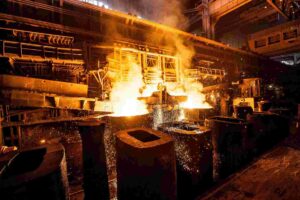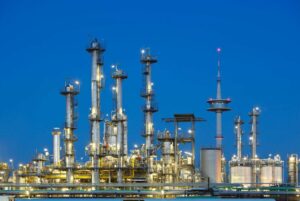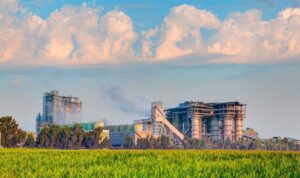Welcome to the Ultimate Guide on Portable FTIR Gas Analyzer! This blog will be your go-to source for all the information. You’ll learn how this amazing device works, and why it’s so great.
Core Principles of FTIR Technology!
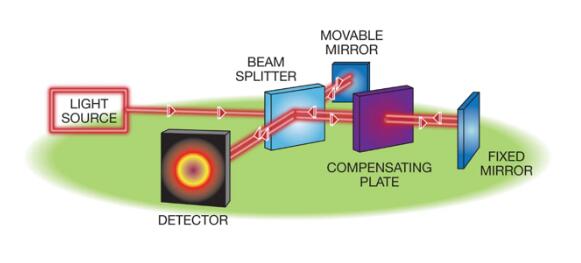
» Basic Concept of Fourier Transform Infrared Spectroscopy
Fourier Transform Infrared Spectroscopy, or FTIR, is a smart way to study gases. FTIR uses a nifty gadget called a Michelson interferometer. Beams of light bounce and mix in the interferometer.
Next, a computer turns these light patterns into graphs. These graphs show what gases are present and in what amounts. This magic is possible thanks to the Fourier transform. FTIR can spot many gases in a snap and even find ones hiding in tiny amounts.
» Benefits of Utilizing FTIR in Gas Analysis
• High Sensitivity
FTIR finds gases in tiny amounts. Even if there’s less than a pinch, like 0.5 ppm, FTIR can still spot it. That’s sharp!
• Broadband Analysis
FTIR can look at lots of gases all at once. Imagine peeking at SO2, NOX, CH4, and more, in a single glance. That’s handy.
• Rapid Scanning
Time matters. FTIR works fast. In less than 2 minutes, your data is ready. Like a race car, it zooms through tests.
• Quantitative Measurements
Numbers are important. FTIR tells you exactly how much of each gas is there. No guesswork. Pure facts.
• Low Noise
No need for earplugs. FTIR is quiet as a mouse with a signal-to-noise ratio greater than 15,000:1. Clarity wins.
• Multiplex Advantage
FTIR is like an octopus, doing many things at once. Studying several gases? FTIR has it covered.
• Reduced Sample Size
FTIR doesn’t hog. With just a small bit of gas, like a thimble, FTIR can do a full check-up.
• Real-time Monitoring
Watch FTIR work live. As gases change, FTIR shows you right away. Always in the know.
• Enhanced Resolution
FTIR is sharp, like an eagle eye. It splits details into bits as tiny as 4 cm-1. Nothing slips by.
• Gas Fingerprinting
Each gas has a special mark. Like a detective, FTIR spots these marks. That’s how it tells gases apart.
• Non-destructive Analysis
FTIR is gentle. No breaking or tearing. Your sample stays just like it was.
• Chemical Identification
Meet a mystery gas? FTIR is on the case. With built-in data on many gases, FTIR solves the riddle.
• Portable Systems
Take FTIR anywhere. With a handy size, 395mm170mm345mm, it’s ready to travel. Plus, it’s lighter than three bricks.
Components of Portable FTIR Gas Analyzer!
- Infrared Source: A high-intensity bulb generates light waves for analysis.
- Interferometer: With a Michelson device, it modulates light for sharp results.
- Gas Cell: Here, the gas sample interacts with infrared light. Some cells boast an impressive optical path adjustable to ppb levels.
- Detector Array: This vital unit receives light after interaction, ensuring accuracy.
- Beam Splitter: Directs light onto distinct paths, critical for interference.
- Sampling Pump: Draws in the sample. This unit in ESE-FTIR-100P is built-in and has 5L±0.5L/min flow.
- Optical Fibers: Transmits light with precision.
- A/D Converter: Turns analog signals to digital, vital for analysis.
- Microprocessor: This brain handles computations and data processing.
- Display Screen: Here you see readings. Real-time, reliable.
- Battery Pack: Powers the unit. ESE-FTIR-100P needs 220VAC±22V.
- Data Storage: Saves data for later review.
- User Interface: Simple controls for ease.
- Calibration Module: This part ensures measurement accuracy, with a repeatability of less than 1%.
Types of Portable Gas Analyzers!
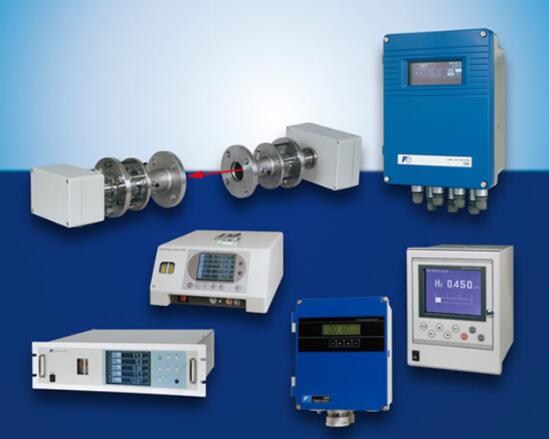
- Portable FTIR Gas Analyzers: These mighty tools measure multiple gases using Fourier Transform Infrared technology. They’re expertly adept at detecting trace levels, with some reaching ppb precision.
- Portable Multi Gas Analyzers: Need to track multiple gases? These are perfect. Fast, efficient. Some measure SO2, NOx, CH4, and more.
- Portable Flue Gas Analyzers: Ideal for industrial setups. Monitors combustion gases like CO2 and O2. Helps keep emissions in check, vital for environmental compliance.
- Handheld 5 Gas Analyzers: Compact, easy-to-use. These track five gases. Ideal for quick checks, field use, and diagnostics. Perfect for environmental safety and process monitoring.
| Feature / Type | Portable FTIR Gas Analyzers | Portable Multi Gas Analyzers | Portable Flue Gas Analyzers | Handheld 5 Gas Analyzers |
| Detection Technology | Fourier Transform Infrared Spectroscopy | Electrochemical, Infrared sensors | Electrochemical, Zirconia | Electrochemical sensors |
| Number of Gases Detected | Multiple (10+) | Typically 4-6 | Typically 3-4 | 5 |
| Accuracy | High (up to 0.5ppm) | Moderate (~1-10ppm) | Moderate (~1-10ppm) | Moderate (~1-10ppm) |
| Spectral Range | Wide (900-5000cm^-1) | N/A | N/A | N/A |
| Applications | Lab analysis, complex gas detection | Safety monitoring, HVAC | Boiler, combustion efficiency analysis | Auto emissions, HVAC |
| Data Storage & Reporting | Extensive, with reporting tools | Limited, basic reporting | Limited, basic reporting | Limited, basic reporting |
| Portability & Size | Portable but relatively larger | Very portable, compact | Portable, medium size | Very portable, handheld size |
Capabilities and Performance Metrics!
- Gas Sensitivity: ESE-FTIR-100P excels in detecting gases like SO2, NOX, CH4 with detection limits below 0.5 ppm.
- Spectral Range: Operates from 900 to 5000 cm-1. Lets it analyze diverse gases.
- Resolution: A solid 4 cm-1, it ensures precise readings.
- Signal-to-Noise Ratio: Over 15000:1. High-quality data is the result.
- Response Time: Under 120 seconds. You get rapid results.
- Data Throughput: USB, RS232, and RS485 interfaces ensure seamless data transfer.
- Operational Temperature: Works in 5°C to 45°C. Great for various environments.
- Battery Life: Not specified, but 220VAC power suggests long-term use.
- Portability: Weighs less than 15 kg. You can carry it.
- Sample Flow Rate: 5 liters per minute. Quick, efficient.
- Detection Limits: Under 0.5 ppm. Detects even trace levels.
- Data Logging: Built-in. Tracks historical data effortlessly.
- Remote Operation: RS232 and RS485 open for remote control.
Applications!
- Emissions Monitoring: For power plants and industries. Keeps tabs on pollution.
- Air Quality: Monitors SO2, NOX, and more. Helps breathe easier.
- Process Control: In factories. Ensures product quality.
- Leak Detection: Finds gas leaks. Keeps facilities safe.
- Research Labs: Enables precise gas analysis. Pushes science forward.
- Hazardous Environments: Detects harmful gases. Protects workers’ health.
- Forensics: Analyzes unknown gases. Solves crimes.
- Combustion Analysis: Monitors CO2, O2 in combustion. Enhances energy efficiency.
Data Collection and Analysis!
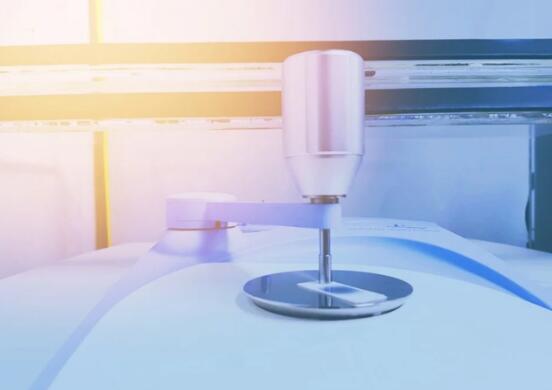
Data Acquisition Methods
- Continuous Monitoring: This analyzer does 24/7 checks. It’s vigilant.
- Point Sampling: It can grab samples from one area.
- Extractive Sampling: The unit takes out tiny bits of gas. It’s like a science ninja.
- On-Demand: Need data now? This device is ready.
- Event-Triggered: When bad stuff happens, it gets to work.
- Remote Sensing: It can work from afar. No need to babysit.
- Multi-Point Sampling: Multiple places at once? No problem.
- Timed Intervals: Set it to check every few minutes or hours.
Data Analysis Techniques
- Baseline Correction: Sets the gas data straight. It’s honest.
- Peak Integration: Finds the top points in data. It’s like a data mountain climber.
- Multivariate Analysis: This is brainy stuff. It looks at more than one data type at once.
- Deconvolution: Sees through the data smog.
- Least Squares Fitting: A math wiz. Makes the data line up nice.
- Spectral Subtraction: It’s picky. Throws out the data noise.
- Fourier Transform: This is big. Turns complex signals into simple bits.
- Principal Component Analysis: Spots what’s important in the data.
- Calibration Curve Fitting: It keeps the data on track.
- Quantitative Analysis: Counts the bits. Gives solid numbers.
- Time-Series Analysis: Checks how things change over time.
- Noise Reduction: It’s like a data whisperer. Keeps things quiet.
- Pattern Recognition: Sees the data trends.
- Data Normalization: Makes sure everything is on a level playing field.
- Spectral Libraries Matching: A matchmaker for spectra data.
Reporting and Visualization Tools
- Spectra Plots: Shows gas info in easy pictures.
- Data Tables: All the numbers in neat rows.
- Trend Graphs: A picture of data over time.
- Heat Maps: Spots the hot and cold data.
- Data Export: Move data with ease.
- Custom Reports: Make reports your way.
- Real-time Dashboards: All the data, right now.
- Alerts & Notifications: It tells you when things change.
Maintenance and Troubleshooting!
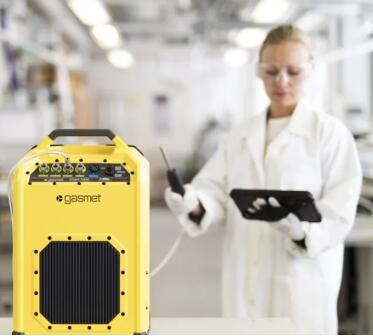
- Regular Calibration: Do this monthly. Ensure precise readings.
- Cleaning Optics: Clean lenses weekly. Use a lint-free cloth. Avoid scratches.
- Replacing Filters: Change filters after 100 uses. Boosts accuracy.
- Firmware Updates: Keep software current. Check bi-weekly. Enhances performance.
- Battery Maintenance: Check battery voltage daily. Replace yearly.
- Sensor Diagnostics: Inspect sensors weekly. Replace if faulty. Keeps data reliable.
- Leak Checks: Do daily. Use 5 psi pressure. Stop gas leaks.
- Data Backup: Back up data weekly. Store in two locations.
- Error Logs Review: Examine logs daily. Spot issues early.
- Connection Testing: Test USB, RS232, and RS485 weekly. Ensures data transfer.
- Ventilation Check: Monthly check. Prevents overheating.
- Software Compatibility: Verify annually. Keeps system current.
- Sampling System Integrity: Ensure tight connections. Monthly check. Stops sample loss.
Calibration and Validation!
- Zero Calibration: Start here. Ensures no false readings.
- Span Calibration: Adjust range. Use known gas concentration.
- Linearity Checks: Confirm linear response. Do this bi-annually.
- Response Time Testing: Measure T90. Ensure it’s below 120s.
- Precision Evaluation: Check repeatability. Aim for under 1%.
- Stability Checks: Monitor zero drift. Keep under ±2% F.S./24h.
- Accuracy Assessment: Compare to a reference. Validate readings.
- Cross-Sensitivity Analysis: Check interference. Maintain gas purity.
- Long-Term Drift Evaluation: Track readings over six months. Spot drift.
- Interference Testing: Identify affecting substances. Optimize settings.
- Repeatability Assessment: Check consistency. Keep results stable.
- Calibration Gas Selection: Use high purity gases. Ensure accurate calibration.
Sample Handling and Preparation!
- Sample Collection: Use 2m tube. Get enough sample.
- Preconcentration: Gather gas. Boosts detection limit.
- Filtration: Use filters. Remove particles.
- Dilution: Lower concentration if needed. Use clean nitrogen.
- Moisture Removal: Keep sample dry. Use desiccants.
- Temperature Control: Maintain 5-45℃. Ensures accuracy.
- Pressure Regulation: Keep 80-106 kPa. Stabilize flow.
- Sample Vials Selection: Use clean vials. Avoid contamination.
- Minimizing Contamination: Clean equipment. Protect sample integrity.
- Sample Labeling: Use clear labels. Track samples.
- Transportation & Storage: Handle with care. Keep samples safe.
- Cleaning Reusables: Clean after use. Keep equipment pristine.
Maximizing the Utility of Portable FTIR Gas Analyzers!
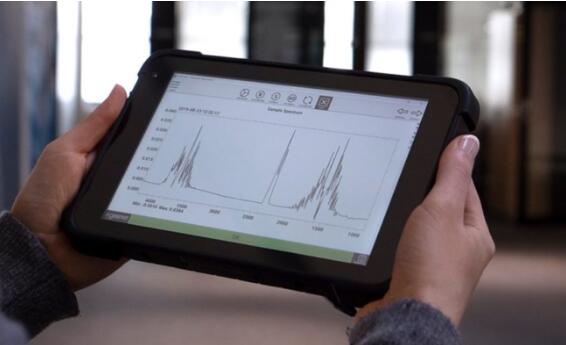
Tips and Best Practices
- Optimal Settings: Pick the right settings. It boosts the signal-to-noise ratio above 15000:1. Precise data is key.
- Routine Checks: Daily checks are vital. You detect issues early and keep the resolution at 4cm-1.
- Corrective Actions: Spot an issue? Take immediate action. Less downtime. More accurate readings.
- Data Management: Store data right. Use USB, RS232, or RS485. It’s crucial.
- Environmental Controls: Keep temperature 5-45°C. Humidity below 85% RH. It ensures less than 0.5ppm detection limit.
- Calibration Schedules: Calibrate often. It’s essential for sub-1% repeatability.
- Upkeep Records: Log maintenance. Track performance trends. It’s a must for a long-lasting analyzer.
- Operator Training: Train your team. Well-trained operators maximize White cell gas chamber utilization.
- Battery Care: Look after power sources. Ensure stable 220VAC±22V, 500W. The analyzer runs smooth.
- Sample Integrity: Ensure pure samples. Use external Nitrogen backflush. Crucial for correct gas concentrations.
- Remote Monitoring: Use remote tech. Real-time data at your fingertips. A game-changer.
- Firmware Updates: Keep the system updated. It will analyze a wide range of gases efficiently.
Customization and Configuration Options
- Sensor Selection: Choose the right sensors. Key for analyzing SO2, NOX, CH4, and more.
- Sampling Modes: Adjust sampling flow to 5L±0.5/min. It’s key for responsive analysis.
- Analysis Parameters: Set precise parameters. Target a less than 120s response time. Accuracy matters.
- Data Reporting: Customize reports. Share vital stats with ease.
- User Permissions: Set permissions. Keep data safe. It’s a top priority.
- Alarm Settings: Configure alarms. Instant alerts for gas levels beyond 0-200 ppm. Safety first.
- Network Configuration: Connect wisely. Facilitate fast data transfer. Efficiency is key.
- Display Customization: Tailor the display. It’s crucial for on-site applications.
- External Device Integration: Integrate devices. More data, better decisions.
- Language Options: Set your language. Clear understanding is critical.
- Data Export Formats: Choose formats that work for you. Transfer data effortlessly.
- Cloud Storage: Use the cloud. Secure, accessible data storage. An essential move.
Integration with Other Instruments and Technologies!
- Data Loggers: ESE-FTIR-100P’s high-capacity data loggers store up to 2TB of critical gas analysis data.
- SCADA Systems: Integration with SCADA ensures 24/7 real-time monitoring, elevating plant safety.
- Gas Chromatographs: Couple it with gas chromatographs for sub-ppm level precision in gas composition.
- Mass Spectrometers: Get in-depth molecular data by adding mass spectrometers; perfect for labs.
- Ambient Monitors: Mesh with ambient monitors to gauge external factors affecting gas analysis.
- Control Systems: Achieve seamless automation by integrating top-tier control systems for error-free operations.
- GPS Units: Equip with GPS units to get location data; essential for mobile monitoring stations.
- Telemetry Devices: Remote monitoring soars with telemetry devices; vital for sprawling facilities.
- Weather Stations: Pair with weather stations to assess how climate impacts gas concentrations.
- Alarm Systems: Fuse it with alarms; get instant alerts on anomalies.
- Networking Hardware: Use high-speed networking hardware; ensure rapid data transfer across systems.
- Remote Sensors: Link remote sensors to stretch the analyzer’s reach.
The Role of Software in Portable FTlR Gas Analyzers!
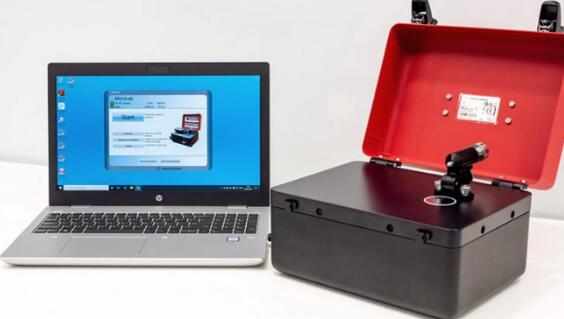
- Data Processing: ESE-FTIR-100P crunches numbers fast. It swiftly converts raw signals into usable data.
- Instrument Control: Users command this machine with ease. Its brain obeys and fine-tunes detection parts.
- User Interface: A clear screen shows users key info. Even beginners grasp it in a jiffy.
- Spectral Libraries: A treasure of gas patterns sits inside. This vault helps nail down mystery gases.
- Data Visualization: Users see gas data in crisp charts. These visuals turn numbers into insights.
- Reporting Tools: A few taps forge data into reports. Share these papers in no time.
- Firmware Management: ESE-FTIR-100P stays sharp. Regular brain updates keep it on the cutting edge.
- Data Storage: This whiz stores heaps of data. Gigabytes of info, safe and sound.
- Security Features: Prying eyes stay out. Solid barriers guard data like a fortress.
- Custom Algorithms: ESE-FTIR-100P evolves. Users add new math tricks to boost its skills.
- Cloud Integration: The sky is not the limit. Users send data soaring to the cloud.
- Plug-ins & Extensions: This tool grows. Snap in more features, and it scales up.
Conclusion
Armed with the knowledge from this guide, you can now understand the true power of Portable FTIR Gas Analyzer. In summary, its technology enables the detection of various gases with high sensitivity and accuracy. Now, to acquire top-tier gas analyzers and services, head over to ESEGAS. Take control of your gas analysis needs today.




